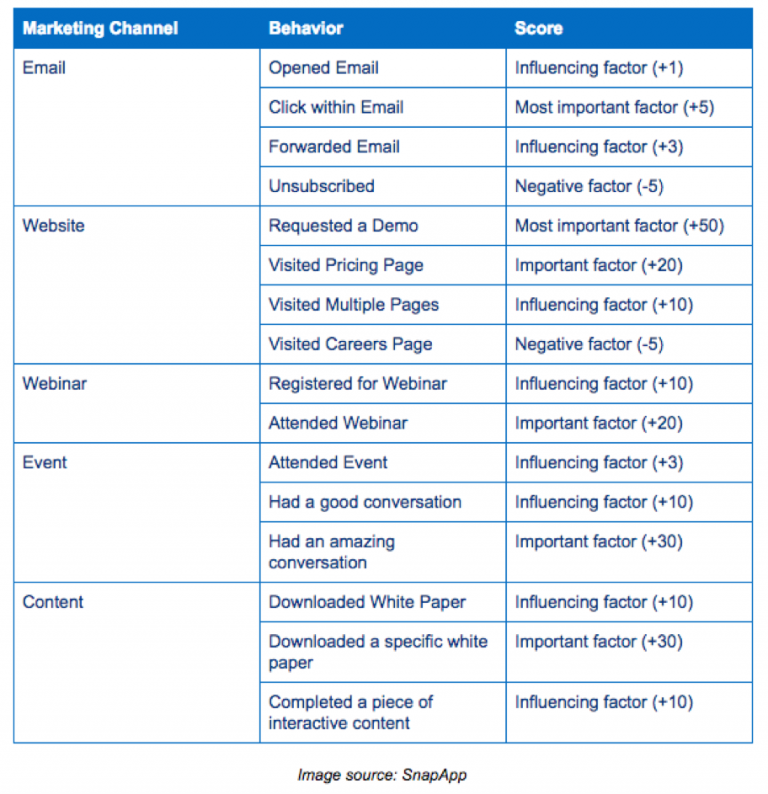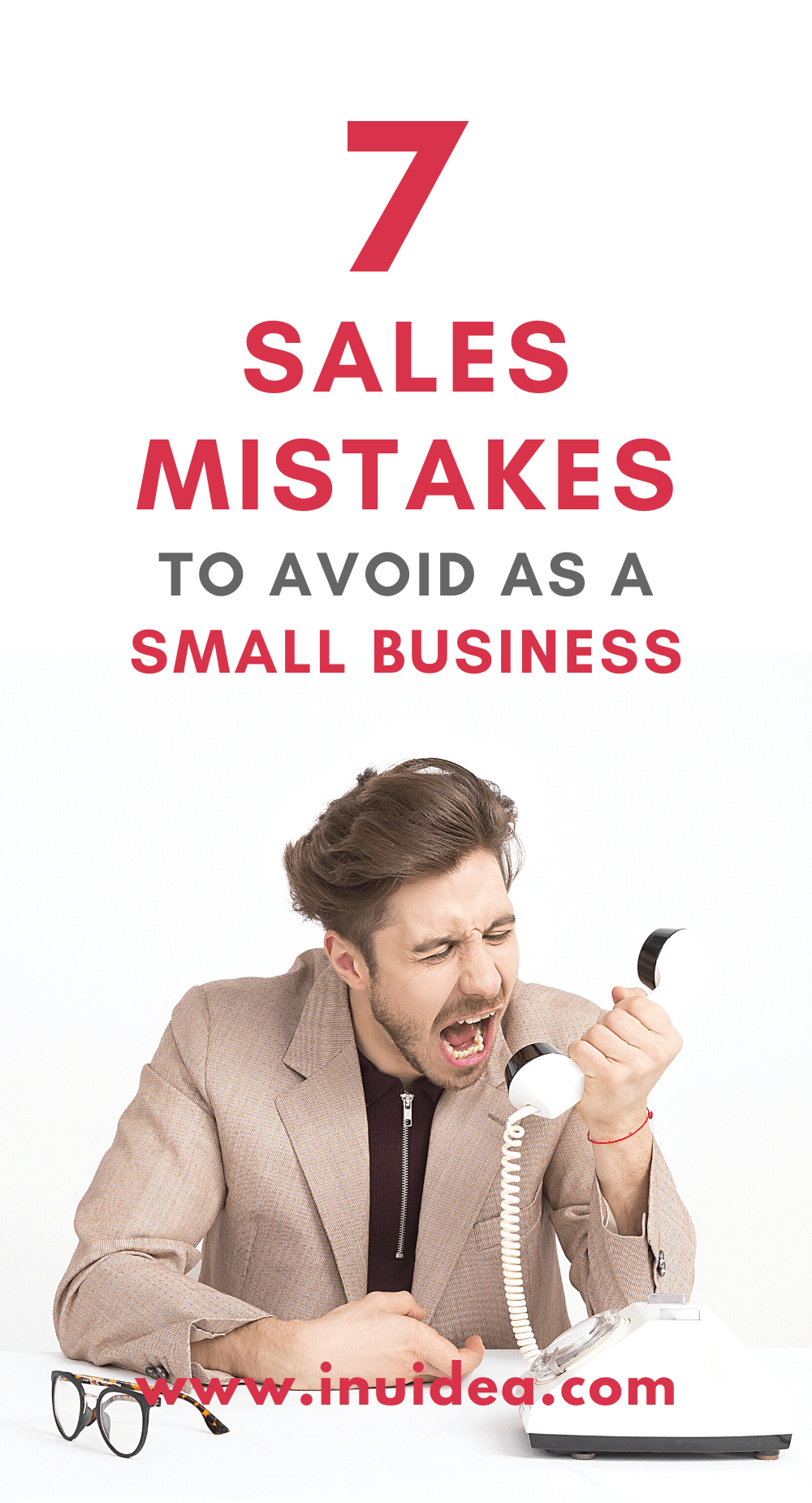No matter your product, industry, or business model, sales are a considerable part of your focus.
Are your revenues matching the effort and resources you’re putting out to gain and serve your customers?
The problem isn’t necessarily with your business. Your lead generation and outreach strategies may be to blame.
If your sales figures are less than stellar, it could be down to one or more of the following reasons. Avoiding these mistakes will be a game-changer.
Table of Contents
Your Targeting System Is Missing the Mark
Traditionally, sales was about casting a wide net and hoping to catch a few fish. The premise was that you could get at least one “Yes” for every 100 people who say “No.”
This hit-and-miss approach might result in a one percent conversion rate while eating up time and money. It also diminishes employee morale and contributes to high staff turnover.
How to turn things around?
With a lead targeting strategy that reaches the customer where they live and connects with them on an emotional level.
You can’t buy someone’s business or loyalty no matter how many sponsored ads you run. You have to earn it.
Rather than thinking of people in terms of numbers — sales figures and conversion rates — focus on learning about your ideal customer and demonstrating how you will meet their needs through targeted content and customer engagement.
A study conducted by HubSpot showed that 96 percent of B2B customers use content to inform buying decisions. That figure is likely higher for B2C prospects.
While everyone loves a deal or a discount, most people just want to know how a product will positively impact their lives.
It’s your job to convey that message.
First, do your marketing research. This will take some time, but it will mean less effort when it comes time to close.
Use your research to identify the ideal customer persona.
Then, create content that speaks to their pain points. Tell them exactly how your product or service will address them, and do so on the marketing platforms that serve your demographic.
Your Team Is Wasting Time on Unqualified Leads
Not every person on your prospect list is a solid lead, nor is every customer at the same point in their journey.
Even the most gifted salesperson is wasting their time if they’re trying to convert a lead that’s unqualified or unready.
According to a study conducted by MarketingSherpa, only 27 percent of the leads sent by marketing departments over to their sales team are even qualified.
Part of the problem is that it’s difficult to determine a qualified lead. Too many marketing and sales associates are unsure of what actually makes a lead qualified.
Mere existence does not create a customer.
The buyer’s journey consists of three basic stages:
- Awareness
- Consideration
- Decision
Your marketing efforts bring awareness, but any interest at this point rarely converts to a sale. Prospects need to be nurtured to convert awareness to consideration.
In order to get a prospect to consider your solution, analyze your past successes and failures. Who are your customers, and at what point were they converted?
More importantly, what disqualified the leads that got away? Was there a specific piece of content that got their attention, such as an ad or an email marketing campaign?
Conversely, which referral resource led to the most successful conversions?
The answers to this will come from an insightful lead scoring system.
This will take a lot of the mystery out of lead targeting and conversions by going below the surface of reaching out to leads that simply fit your demographic and analyzing the behavior that leads to successful closes.

Source: Marketo
Using data from social media outreach and other digital analytics, you can track the digital footprint of consumers to learn their behavior before, during, and after a sale.
This will take a lot of the guesswork out of your marketing strategy, allowing you to better identify where buyers are in their journey and nudge them further along.
You Lack That Personal Touch
You’ve connected with a prospect and made your initial pitch. Now, what do you do?
If you’re like too many sales associates, you’ll move on to the next prospect and hope for an immediate “Yes.”
The problem is, most people aren’t ready to buy right away.
They want some time to think about making a commitment. Sometimes, they simply want to review their options or learn more about your company.
In fact, it usually takes several follow-up contacts to close a sale.
Rather than waiting for them to get back to you, reach out to them with personalized follow-up.
This could be in the form of a call during which you will thank them for their time and ask if they need further information, or an email making them a special offer.
Try to sprinkle in details gleaned from the initial contact to make it more individualized.
Depending on how primed the prospect is and where they are in their journey, it could take several pleasant but persistent contacts to convert.
The ideal amount of follow up contacts? According to Zoom Info, six is the magic number.
Automation Is Passing You By
Nearly all of the above suggestions could benefit from automation.
By using the right apps to take care of core functions like email and analytics, you’ll have more time to focus on building customer relationships.
Much of this automation can be handled by choosing a solid customer relationship management system (CRM).
These tools are an investment that will boost productivity and support a more granular, targeted marketing strategy.
They do so by connecting all of your platforms and marketing silos, providing detailed analytics, and generally managing every aspect of your customer outreach.
Not only does it give you the data you need to make smart decisions, but it also helps you make sense of the data and put it to good use.
Your Offers Lack Value
Too many businesses focus on price points when marketing to customers. They either try to undercut the competition to lure business or offer incentives to try to sweeten the pot.
Although customers ultimately want to know the bottom line, what they’re really looking for is value. In fact, many people are willing to pay a little more if the value is there.
Therefore, avoid making price your only unique selling point.
Rather than focusing on how much it costs, instead highlight how your product will improve lives or solve a specific problem,
Point out how it will accomplish this better and faster than the competition.
You can accomplish this by really listening to your customer rather than constantly trying to sell them to your company.
Use the information you gather to help them better understand their needs, and then talk about how your product or service will provide a solution.
You’re Not Being Proactive
Making passive income is okay, but you won’t gain any revenue by passively waiting for the customers to come to you.
By not engaging in proactive sales techniques, you’re losing an opportunity to connect with customers on the level necessary to convert.
Many sales associates hate the idea of cold calling. However, if you’ve done the research and followed the above recommendations, your leads will be a little warmer.
Cold calling also provides a unique opportunity to do a little pre-sales reconnaissance so that you can personalize your approach during follow up calls.
When done right, cold calling is an art that can be refined and perfected to yield amazing sales results.
You’re Coming off as Aggressive
On the flip side of passivity is the pushy sales rep that turns prospects off.
Don’t be that guy. You know the one. He or she conducts follow-up on steroids in a way that borders on harassment.
They seem hungry, a little too hungry so that it reeks of desperation.
There’s a fine line between persistent and pushy.
You need to learn the art of active listening and respond rather than giving them the hard sell.
If you adopt a customer-centric approach that focuses on the prospect’s needs, but also knows when to back down, you’ll leave a much better impression on them, which will help you nurture those relationships in the long run.
Tips for Productive Outreach
A customer-centric approach doesn’t mean passively listening while they ramble on about their Aunt Trudy.
Actively listen and look for opportunities to steer the conversation back to their pain points and how you can help relieve them. Use the opportunity to connect with prospects on an emotional level.
Here are some tips for positive outreach.
Slow Down
This is a sale, not the lead in a hot news story. Even if you have a deadline or quota to meet, remember that sales is really about forming relationships and human interaction.
Let your automation take care of the technical stuff while you focus on nurturing the client.
Remain Focused
Simply make your pitch, and then listen to what the lead is telling you. Look at their body language or take note of pauses and tone if you do not face to face.
Do your best to avoid small talk.
Instead, use the information you gain to overcome objections and refine your approach.
Avoid Hard Deadlines
Nothing feels less genuine to a prospect — or turns them off faster — than the “buy now or you’ll lose out” mentality.
It’s okay to extend a limited-time offer if time is of the essence, but reassure them that it isn’t the end of your interaction.
They can be further persuaded by telling them about trial periods, money-back guarantees, and other incentives that soften the offer and reduce their risk.
Talk Less, Listen More
This tip may seem redundant at this point in the article, but in reality, it can’t be emphasized enough.
People open up and feel more comfortable when they’re allowed to talk.
The more comfortable they are, the more likely they are to say yes.
Avoid Yes-No Questions
You can become a resource for understanding and information by avoiding yes or no questions and encouraging engagement through open-ended questions that lead them toward a “Yes”.
Put the focus on the problem and how your product can solve it rather than on the product itself.
Use our other points, such as proactivity, lead refinement, and follow up to gently, but firmly, nudge the lead further along in their journey.
Final Thoughts: 7 Sales Mistakes to Avoid as a Small Business
Do you have a great product or business idea, but you can’t seem to make it pay off?
As a small business owner, you have a lot on your plate.
However, if you don’t step up your lead generation and follow up, it will affect more than just your bottom line.
Customer loyalty and staff morale will suffer, too.
Our goal is to help small business leaders like you make the most of their limited resources by offering solutions that are easy to implement once you know how.
Isn’t it time to work smarter rather than harder?
This is a guest post written by Michelle Laurey.
Michelle Laurey works as a VA for small businesses. She loves talking about business, and productivity, and share her experience with others. Outside her keyboard, she spends time with her Kindle library or binge-watching Billions. Her superpower? Vinyasa flow! Talk to her on Twitter @michelle_laurey.
If you want to submit guest posts to Inuidea, check out the guest post guidelines for Inuidea.

Great article! Useful and well-structured information. thank you for sharing such great information.
Hi James,
Thanks a lot for your comment.
Stay tuned!